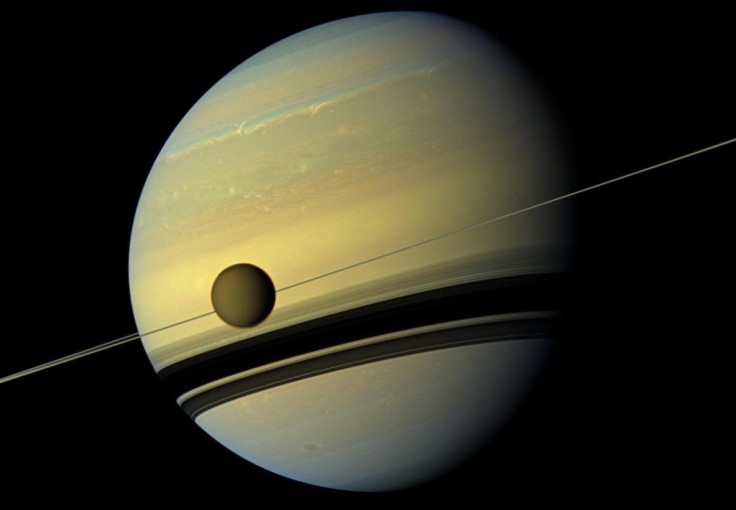NASA Has Found An Ingredient Used To Make Household Plastic On Saturn’s Moon, Titan

NASA’s Cassini spacecraft has found a material on Saturn’s moon, Titan, that can be used to make plastic, the space agency said on Monday, adding that it was the definitive detection of such an element on any moon or planet, other than Earth.
According to NASA, Cassini detected a small amount of propylene, a chemical used to make food-storage containers, car bumpers and other consumer products, in Titan’s lower atmosphere. To make the discovery, Cassini used its Composite Infrared Spectrometer, or CIRS, which measures the infrared light, or heat radiation, emitted from Saturn and its moons.
“This measurement was very difficult to make because propylene's weak signature is crowded by related chemicals with much stronger signals,” Michael Flasar, Goddard scientist and principal investigator for CIRS, said in a statement. “This success boosts our confidence that we will find still more chemicals long hidden in Titan's atmosphere.”
Scientists said that propylene is the first molecule to be discovered on Titan using CIRS. According to researchers, they isolated the same signal at various altitudes within the lower atmosphere of Titan and identified propylene with a high degree of confidence.
“This chemical is all around us in everyday life, strung together in long chains to form a plastic called polypropylene,” said Conor Nixon, a planetary scientist at NASA and the lead author of a paper, published in the Sept. 30 edition of the Astrophysical Journal Letters. “That plastic container at the grocery store with the recycling code 5 on the bottom -- that's polypropylene.”
According to NASA, it was the Voyager 1 spacecraft that previously identified many of the gases in Titan's cloudy atmosphere as hydrocarbons -- the chemicals that primarily make up petroleum and other fossil fuels on Earth. And, as researchers continued to discover more chemicals in Titan's atmosphere, propylene was found as a result of more detailed analysis of the CIRS data.
Although Cassini's mass spectrometer, a device that looks at the composition of Titan's atmosphere, had hinted earlier that propylene might be present in the upper atmosphere, a positive identification had not been made.
"I am always excited when scientists discover a molecule that has never been observed before in an atmosphere," Scott Edgington, Cassini's deputy project scientist at NASA, said. “This new piece of the puzzle will provide an additional test of how well we understand the chemical zoo that makes up Titan's atmosphere.”
© Copyright IBTimes 2024. All rights reserved.












